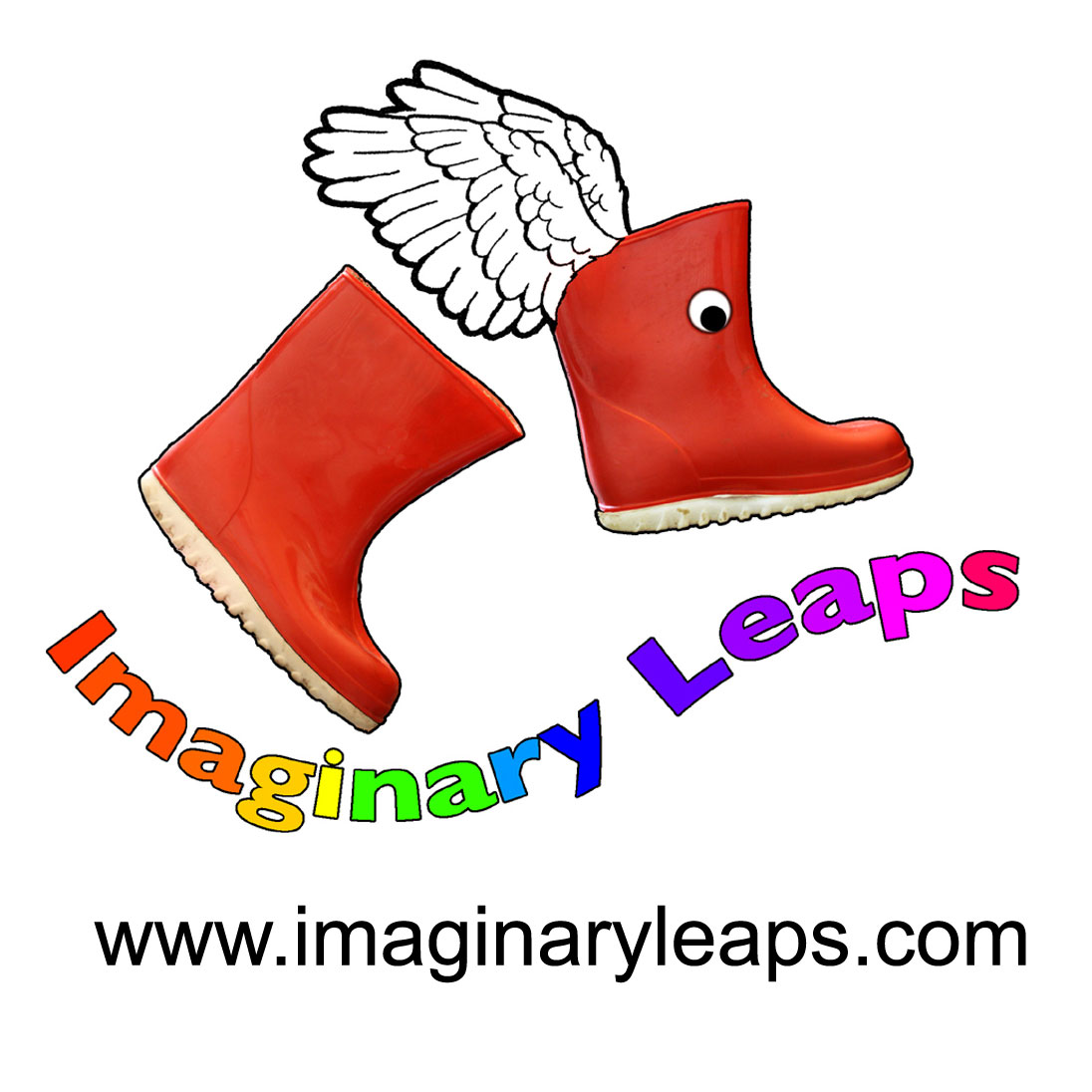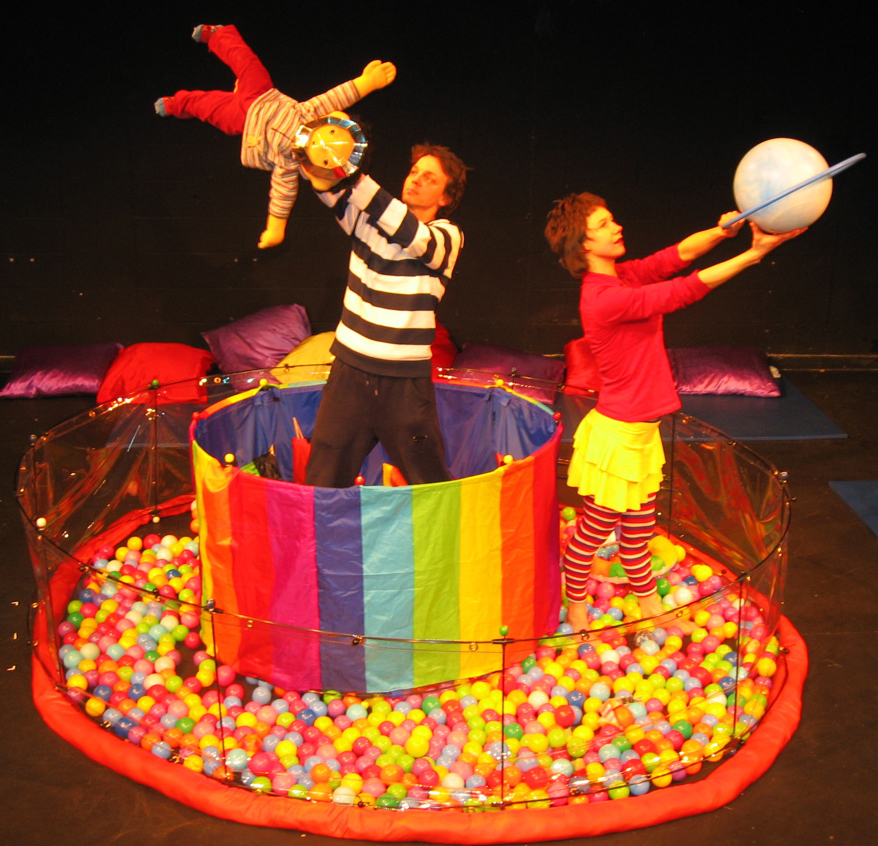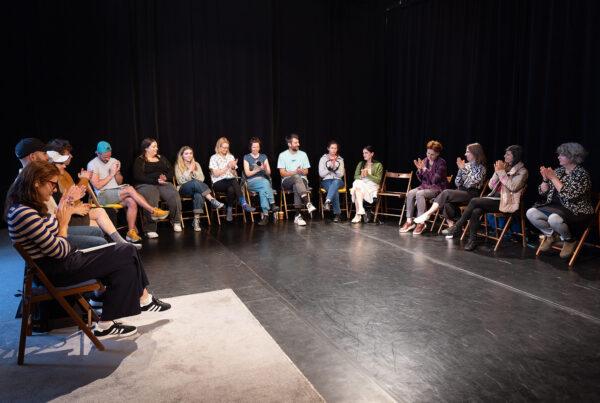Imaginary Leaps’ creative director reflects on the role of the puppet in making early years theatre and its importance in finding ways to communicate effectively with children writes.
 For the past 5 years whilst resident in Western Australia, I have been exploring the world of puppetry and play with children of all ages. At the heart of my work with Imaginary Leaps play research workshops, is a creative open learning process, child-led, with active learning through puppetry, innovating original theatrical material with and for young children. The sessions explore sensory materials and objects, with music and movement, to stimulate imaginative play, engaging the children as participants and audience in a process of creating characters, stories and mini-worlds. Our aim is to go on an adventure – a journey of investigation with the children, to support and develop their imaginations and learning, which creates interesting ideas and material for early years theatre making.
For the past 5 years whilst resident in Western Australia, I have been exploring the world of puppetry and play with children of all ages. At the heart of my work with Imaginary Leaps play research workshops, is a creative open learning process, child-led, with active learning through puppetry, innovating original theatrical material with and for young children. The sessions explore sensory materials and objects, with music and movement, to stimulate imaginative play, engaging the children as participants and audience in a process of creating characters, stories and mini-worlds. Our aim is to go on an adventure – a journey of investigation with the children, to support and develop their imaginations and learning, which creates interesting ideas and material for early years theatre making.
‘There is a fragile border between play and theatrical dimension’ (Frabetti, 2009)
In an Imaginary Leaps session, the puppet is the focus, to begin an investigative framework of activities, scaffolding different sensory play techniques within a theme or story. Sitting in a circle to make a clear space, provides focus for the puppet and welcome’s everyone in a secure routine. Bobby is a soft, tactile child puppet where characteristic gestures and features are only gently suggested so the children’s own imaginations can imprint what they want to see. Simple eyes and a curved line for a mouth, allows the child the freedom to ‘fill in the gaps’, changing its expression in the eyes of the child. Bobby is non verbal, and built to be touched and embraced, as required by the child, and can be any gender or culture. The puppet helps the children find their own confidence, role and identity through play.
Over the sessions, most children build a strong bond with Bobby and every child has their own relationship with the puppet. As they get to know the puppet in the sessions, they often spontaneously show affection when they say hello, enjoying expressing how they feel to the puppet, even if that is sometimes a punch! I remind them that Bobby is a real baby puppet, gathering him up and modelling comforting. . ‘He is just a little puppet, How do we treat babies?’ I ask them. At Kulunga Aboriginal Kindergarten in Western Australia the children answered ‘We kiss them, we hug them, we play peek a boo, and we are gentle.’ Very often children will discipline the other children, if they feel they are not treating the puppet well. At Kulunga, the puppet Bobby provided a strong focus to discuss how we treat each other. Children were able to have a safe space to communicate and this opens up a line of communication for discussion on how we should treat each other respectfully.
 Children practise all skills through rhythmic repetition and it is through play that children imitate adults. Puppets and people alike need tender care. This gives space to talk about emotions simply, and the children express to the puppet how they feel today. We talk about the different feelings, are we happy or sad? or more complex emotional states. Bobby the puppet listens to a 4 year-old girl expressing her feelings, she says she feels ’tickly inside’. ‘Shes not right’ she says in the third person, echoing her parents voice, as she has been unwell previously.
Children practise all skills through rhythmic repetition and it is through play that children imitate adults. Puppets and people alike need tender care. This gives space to talk about emotions simply, and the children express to the puppet how they feel today. We talk about the different feelings, are we happy or sad? or more complex emotional states. Bobby the puppet listens to a 4 year-old girl expressing her feelings, she says she feels ’tickly inside’. ‘Shes not right’ she says in the third person, echoing her parents voice, as she has been unwell previously.
Puppetry has a ‘distancing effect’. Just as Rod Hull was never blamed for his puppet emu’s bad behaviour, a young person can make a puppet say and do things which they would feel unable to do. This allows children to express what they truly feel and gives a greater understanding of how to meet their needs. The affirmation that the child is able to communicate with other children, other people, through the puppet increases self-esteem and confidence.
Working in creating theatre for young children, we always starts with the objects & materials in their hands. Later on, the objects and materials may be made into fabricated puppets but to begin it is a process of experiences with the children. To learn what is appropriate and engages the very young child. Throughout history, children have made simple models of people. Scraps of cloth, bits of wood and stones come alive and are animated.
Puppetry in its play and making theatre, is an activity that provides sensory stimulation simultaneously for intellectual and emotional development. In practice, for the participants in the sensory play, it brings the human basic feeling of oneself, a feeling of one’s unique value, coming from deeply inner fields of their own personality, not from external incentives or awards. But it is a great experience for all, children and adults, to become participant and audience of this unique process of imagination.
‘Theatre is transformation. It is a vision created by an artist…transforming…himself or a puppet or even an object into an imagined character’ (Jurkowski,1988)
Links –
By Rachel Riggs



